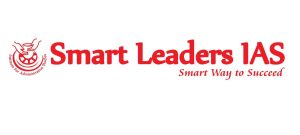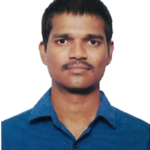Sociology prediction 2023 paper-I & II
Sociology paper-I
| S.No | UPSC Questions | Reflected Questions | ||
| 1 d) | Is reference group theory a universally applicable model? Elucidate. | P1 | Test 6 Q 4 | How can we use reference group theory to understand social mobility in India? |
| HL | SN Q 21 | Reference groups and Relative deprivation/Sanskritisation | ||
| 1 e) | Do you think that the boundary line between ethnicity and race is blurred? Justify your answer | P1 | Test 7 Q 8 | *Modernisation presupposes class society; however caste, ethnicity and race are still predominant. Explain |
| HL | SN Q22 | Social stratification- Class, Status, Gender, Ethnicity and Race as dimensions | ||
| 2 a) | What, according to Robert Michels, is the iron law of oligarchy? Do lions and foxes in Vilfredo Pareto’s theory, essentially differ from each other? Substantiate. | P1 | Test 8 Q 9 | What are the theoretical models of societal power? Which one of them is most applicable in advanced industrial societies? |
| HL | SN Q38 | Circulation of elites | ||
| 2 b) | What is historical materialism? Examine its relevance in understanding contemporary societies. | P1 | Test 3 Q 2 | Analyze the salient features of historical materialism |
| 2 c) | What are variables? How do they facilitate research? | P2 | Test 9 Q 3c | What are variables? Discuss their role in experimental research. |
| 3 a) | What are the characteristics of scientific method? Do you think that scientific method in conducting sociological research is foolproof? Elaborate. | P2 | Test 3 Q 5c | No scientific system is ever capable of reproducing all concrete reality, nor can any conceptual apparatus ever do full justice to the infinite diversity of particular phenomena. What solution Weber suggests ? |
| P1 | Test 1 Q 7 | Elaborate the problems and prospects of sociology as a science. | ||
| 3 b) | How do you assess the changing patterns in kinship relations in societies today? | P2 | Test 10 Q 5a | Give some of the important studies relating to the changing dimensions of family structure in urban India. |
| 3) c | Is Weber’s idea of bureaucracy a product of the historical experiences of Europe? Comment. | P2 | Test 3 Q 6c | Max Weber says that modern lives are subject to institutions, which reduce humans to objects, and ultimately cages them to a life of monotony. Elaborate |
| 4 a) | Do you think that common sense is the starting point of social research? What are its advantages and limitations? Explain. | P2 | Test 1 Q 1b | “Sociological knowledge cannot be entirely separated from common sense”. Comment’ |
| 4 b) | How is poverty a form of social exclusion? Illustrate in this connection the different dimensions of poverty and social exclusion. | P1 | Test 7 Q 3 | Discuss the relationship between poverty and social exclusion. |
| P2 | Test 6 Q 6a | Social exclusion is a more multidimensional and multilevel concept than poverty. Discuss | ||
| HL | LA Q 13 | Poverty, deprivation, inequalities and poverty alleviation schemes/multi-dimensional poverty and social exclusion | ||
| 4 c) | Highlight the differences and similarities between totemism and animism. | P1 | Test 2 Q 7 | How Durkheimian concept of religion is different from that of his predecessors? What are the intellectual responses to his theory of religion? |
| 5 a) | Examine the relevance of corporate social responsibility in a world marked by increasing environmental crises. | HL | LA Q 27 | *Crisis of development: displacement, environmental problems and sustainability |
| 5 b) | How is civil society useful in deepening the roots of democracy? | P2 | Mock Test Paper I Q 6c | Analsye the role of civil society in influencing collective mobilization in democratic society. |
| P2 | Test 4 Q 1c | If the state is marked by the logic of power, and the market dominated by that of profit, the logic of civil society is that of solidarity and civility. Comment | ||
| 5 c) | What functions does religion perform in a pluralistic society? | P2 | Mock Test Paper I Q 7b | Elaborate Emile Durkheim s analysis of the elementary forms of religious life and role of religion in society. How does he explain existence of religion in modern industrial societies? |
| P1 | Test 2 Q 5 | To what extent Durkheimian explanation of religion relevant to the contemporary scenario in India? | ||
| 5 e) | Does women’s education help to eradicate patriarchal discriminations? Reflect with illustrations. | P2 | Test 9 | Is patriarchy a universal phenomenon? To what extent is patriarchy a cause for the problems of women? |
| HL | SN 57 | Challenges before Girl’s education | ||
| 6 a) | What are the different dimensions of qualitative method? Do you think that qualitative method helps to gain a deeper sociological insight? Give reasons for your answer. | P2 | Test 7 Q 6a | Examine epistemological foundations of qualitative methods of social research. Analyse its limitations in social research. |
| HL | LA Q 27 | Quantitative and Qualitative techniques | ||
| 6 b) | Explain Max Weber’s theory of social stratification. How does Weber’s idea of class differ from that of Marx? | P1 | Test 7 Q 7 | Compare and contrast the contributions of Marx and Weber on social stratification in capitalist society? |
| P2 | Test 6 Q 2b | Compare and contrast the contributions of Marx and Weber on social stratification in capitalist society | ||
| HL | LA Q 18 | Social stratification: Karl Marx Vs Weber | ||
| 6 c) | What are the ethical issues that a researcher faces in making use of participant observation as a method of collecting data? Explain. | P2 | Mock Test Paper I Q 1c | What is Participant Observation? Enumerate the advantages and disadvantages of participant observations. |
| P1 | Test 10 Q 3 | “Participant observation is the most effective tool for collecting facts.” Comment. | ||
| 7 a) | Explain how economic globalization has brought changes in the patterns of employment in the 21st century. | P1 | Test 15 Q 5 | Comment on the sociological impact of globalization on people working in the Informal sector |
| 7 b) | Do you think that the social media has brought significant changes in the forms of protest? Argue your case. | P2 | Mock Test Paper II Q 5d | In what ways social media network facilitate new social movements? Give suitable examples |
| 7 c) | What is Taylorism? Analyze its merits and demerits. | P1 | Test 2 Q 8 | *The division of labour goes beyond economic interests to establish social and moral order within a society. Critically examine |
| 8 a) | Assess critically A. G. Frank’s ‘theory of development of underdevelopment’. | P1 | Test 10 Q 7 | Critically examine the contribution of dependency theories in understanding the present global scenario. |
| P2 | Mock Test Paper I Q 8b | Developing countries are vulnerable to exploitation during global crises. In the light of this statement explain the dependency of developing nations on the global institutions. | ||
| 8 b) | What are new religious movements? Elaborate emphasizing their forms and orientations. | P2 | Test 3 Q 3c | Distinguish between sects and cults. Why religious cults are so popular today? |
| HL | SN Q 49 | Sects and cults. Why it is proliferating today? | ||
| 8 c) | Examine the role of science and technology in addressing age-old taboos and superstitions. | P2 | Test 8 Q 1e | Technology has changed the way people work and think. In the light of this statement examine how technology changes societies? |
Sociology paper-II
| S.No | UPSC Questions | Reflected Questions | ||
| 1 a) | Highlight the significant features of A.R. Desai’s ‘Dialectical Perspective’ to study Indian society. | P2 | Test 1 Q 3a | How far A.R.Desai adopted dialectical-historical model to explain India’s social structure and processes? |
| P1 | Test 11 Q 7 | Elaborate A.R.Desai’s perspective to the study of Indian society. What are the limitations of the dialectical approach to the study of Indian society? | ||
| HL | LA Q3 | A.R.Desai’s dialectical materialism/Indian Nationalism | ||
| 1 b) | “The decade of 1950s was the golden period of village studies in Indian Sociology.” Explain the statement. | P1 | Test 12 Q 1 | Distinguish between the ‘book view’ and ‘field view’ of the Indian caste system. |
| P2 | Test 5 Q 1e | Critically examine briefly the phrase “Little Republics” as used to denote India’s villages. | ||
| HL | SN Q5 | Book view Vs field view | ||
| 1 c) | Analyze the differences between the attributional and interactional approach in studying the caste system. | HL | LA Q7 | Perspectives on the study of caste systems: Louis Dumont and Andre Beteille |
| P2 | Test 1 Q 5C | Explain GS Ghurye’s Indological approach to the understanding of Indian society. | ||
| 1 d) | Are Tradition and Modernity antithetical to each other? Comment. | P1 | Test 10 Q 9 | Examine the dialectical relation between tradition and modernity in the study of social change. |
| P2 | Test 10 Q 2b | “Tradition and modernity are misplaced polarities in the study of social change in India.” Elucidate. | ||
| 1 e) | Discuss the main features of Land Reforms in post-independence India. | P2 | Test 10 Q 1d | Has land reforms brought about desired agrarian transformation? Give suitable illustrations |
| HL | SN Q46 | Can Land reforms curb rural inequalities/poverty | ||
| 2 a) | Do you agree with the view of Andre Beteille that India’s villages are representative of Indian society’s basic civilizational values? Present a sociological overview. | HL | SN Q24 | The myth of village self sufficiency– M.N.Srinivas/Andre Beteille/S.C.Dube |
| P2 | Test 5 Q 1e | Critically examine briefly the phrase “Little Republics” as used to denote India’s villages. | ||
| 2 b) | Elaborate the salient features and the role of middle class in India’s democracy and development. | P2 | Mock Test Paper-II Q 3c | Describe the process of emergence of the middle class in India |
| P 2 | Test 10 Q 2c | How has the New Economic Policy (1991) affected the middle class in India? | ||
| 2 c) | Analyse the role of market and modern forces in understanding the changing trends in marriage systems in India. | P2 | Test 9 Q 6b | Examine the emerging trends in marriage and family as a response to the social transformation. |
| HL | LA Q8 | Family/Marriage Changes / crisis in India Today (Impact of Urbanisation / Industrialisation /Globalisation/Live in relationship/Legalisation of Homosexuality) | ||
| 3 a) | Contextualize Louis Dumont’s concept of ‘binary opposition’ with reference to caste system in India. | P2 | Mock Test Paper II Q 7a | Discuss the Louis Dumont’s concept of purity and pollution. How far these concepts are relevant in explaining the Hindu caste system? |
| P1 | Test 12 Q 7 | ‘Collectivism and hierarchy’, are the organizing principles of the ‘caste system’ . Critically examine Louis Dumont’s concept of purity and pollution. | ||
| 3 b) | Define the concepts of ‘Descent’ and ‘Alliance’. Differentiate between North Indian and South Indian Kinship systems with examples. | P2 | Test 7 Q 1e | How do the rules of descent and alliance in kinship differ from each other? Illustrate. |
| HL | SN Q15 | North Indian Vs South Indian kinship system | ||
| P2 | Test 7 Q 1B | What, according to Irawati Karve, are the major differences between North Indian and South Indian Kinship systems? | ||
| 3 c) | Critically examine the concept of Sanskritisation with suitable examples. | P2 | Test 1 Q 1d | Why Sanskritization is criticised as regressive to the extent that it is antithetical to any subaltern political initiative against caste? |
| HL | SN Q1 | Sanskritisation and Westernisation | ||
| 4 a) | Analyse the perspectives of Isolation, Assimilation and Integration in understanding the trajectories of Tribal Development. | P2 | Test 10 Q 6b | Analyse the colonial and post colonial policies for tribes in India. |
| HL | SN Q20 | Tribal policies- Integration/Assimilation of Tribes – Problem of Tribal identity/tribal autonomy | ||
| 4 b) | Explain the implications and the impact of globalization in situating the changing agrarian class structure in India. | P2 | Test 5 Q 5d | Comment on the factors responsible for the growth and consolidation of middle-level peasantry in rural India. How it is related to capitalism in Indian agriculture? |
| P2 | Test 5 Q 6b | Critically discuss the changing agrarian modes of production in Indian society | ||
| 4 c) | Critique the victory narratives of Green Revolution in the context of Indian society. | HL | LA Q11 | Changing Modes of Production in Indian Agriculture – Green revolution / Globalisation / Capitalism |
| 5 a) | Citing some case studies, expand the concept of ‘Development-induced Displacement’. | HL | LA Q21 | Uneven development/displacement induced development and Tribal unrest |
| P1 | Test 16 Q 9 | The problem of displacement is inherent in the idea of development. Analyze the statement critically. | ||
| 5 b) | Examine the concept of ‘Cultural Pluralism’ in the context of India’s Unity in Diversity. | P2 | Test 3 Q 5a | Write a note on ‘cultural pluralism’ in multi-religious society like India. |
| 5 c) | Highlight the salient features of the New Education Policy (NEP) 2020. | P2 | Test 8 Q 1b | Sociology of New Education Policy |
| 5 d) | Analyse the sociological interconnections between Social Media and Mass Mobilization in India. | P2 | Mock Test Paper-II Q 5d | In what ways social media network facilitate new social movements? Give suitable examples |
| HL | SN Q72 | Social media network/face book | ||
| 5 e) | Discuss the nature of regional variations in sex-ratio in India, stating reasons thereof. | P2 | Mock Test Paper-II Q 2c | Explain the relation between son meta preference and declining child sex ratio |
| P 2 | Test 7 Q 1d | Underline the socio-cultural factors responsible for India’s skewed sex-ratio. | ||
| HL | SN Q35 | Son meta preference and declining child sex ratio | ||
| 6 a) | How do you account for the increasing influence of religion in public and personal spheres in the context of secularization thesis in India? Explain. | P2 | Mock Test Paper-I Q 6a | Critically analyse the dialectical relations between secularization and cultural nationalism with suitable illustrations |
| P2 | Test 3 Q 3a | “Secularization is not an either-or phenomenon”. Explain the statement in the light of global trends toward secularity. | ||
| P1 | Test 9 Q 8 | The rise of fundamentalism in modern society, points to the fact that both secularization as well as religious revivalism are happening at the same time. Examine | ||
| HL | LA Q24 | Secularization and Cultural Nationalism/pluralism | ||
| 6 b) | In the face of rising global climatic concerns, how do you contextualize the relevance of the Chipko movement and its Gandhian tone? Answer analytically. | P2 | Test 8 Q 5e | Explain environmentalism as a new social movement. |
| P2 | Test 4 Q 3b | Discuss the various forms of environmental movements waged in India. | ||
| HL | LA Q28 | Environmental movements /Global warming/Ecocentrism | ||
| 6 c) | What actionable measures would you suggest to curb the recurrent child labour menace in India? | P2 | Test 2 Q 6c | Analyse the determinants of child labour in India today |
| P1 | Test 15 Q 3 | Point out the main causes of ‘child labour’ in India. How far state policies have succeeded in its elimination? | ||
| HL | SN Q48 | Child labour/Child labour Act 2016 | ||
| 7 a) | Do you think that the decades of Dalit political mobilisations and movements have helped in strengthening India’s democracy? Substantiate your arguments with facts. | P1 | Test 4 Q 5e
| Analyze the term ‘dalit’ and the evolution of the related concept as a reflection of the changing consciousness and self – assertion of the dalit community
|
| HL | Test 15 Q 6 | What is identity politics? Discuss the main trends in Dalit movements in India. | ||
| P2 | LA Q24 | Dalit consciousness today and its challenges | ||
| 7 b) | What is ‘reverse migration’? Discuss its features, causes and consequences in India. | P2 | Test 10 Q 6c | What are the sociological reasons and implication of “reverse migration” during the recent pandemic in India? |
| P2 | Test 5 Q 5c | Migration as a social and cultural process, not merely an economic one. Analyse in the light of sociological studies | ||
| HL | Test 2 Q 1d | Labour migration is a socio-economic issue.Analyse | ||
| 7 c) | Discuss the phenomenon of rural-urban continuum with suitable examples. | P2 | SN Q 40 | Rural -Urban continuum |
| 8 a) | Explain the thematic linkages between ‘Patriarchy’ and ‘Honour killing’ in India, citing some recent cases. | P1 | Test 7 Q 2b | Define patriarchy. How does patriarchy manifest in interpersonal relations? |
| HL | Test 9 Q 1 | What is patriarchy. Discuss how the power of patriarchy is asserted in both the private and public sphere simultaneously. Evaluate | ||
| HL | SN Q13 | Sociology of Inter caste marriages / Caste conflicts / Honour killing | ||
| 8 b) | Discuss the challenges faced by the cooperative movements in India. Suggest measures to strengthen the movement at the grass-roots level. | P2 | LA Q12 | Programmes of rural development, Community Development Programme, cooperatives |
| P2 | Test 10 Q 6b | Poverty breeds poverty in rural India.” Evaluate poverty alleviation and Rural Development Programmes in the light of this statement. What role do co-operatives play in poverty alleviation in rural India | ||
| 8 c) | What is ‘Ageing’? Discuss the major problems of aged people in India. | P1 | Test 10 Q 3c | How is ageing becoming an emerging issue in Indian society? Do you agree that the role of elderly care giving is disproportionately gendered in developing countries? |
We are claiming the questions based on our SOCIOLOGY ONE YEAR TEST BATCH conducted in two phases and the HIT list (HL) which has Short Notes (SN ),Long Answer(LA) The first Phase (P1) had 16 sectional tests. The second Phase (P2) had 8 Sectional tests +4 Full tests . Hit list (HL) is a list of important topics which will be released to aid the revision of aspirants during Mains exam time for the last 15 years . |
To the Kind Attention of the Aspirants,
Regarding 1a,1b,1c,5d of Paper 1
Paper – I
- We are not claiming Q 1a,1b,1c,5d of UPSC CSE 2023 as the verbatum of these questions was not asked in SOCIOLOGY ONE YEAR TEST batch 2022-23. For students who attended SOCIOLOGY INTEGRATED COURSE the lectures gave them insights to attend these questions .
*Only the words are different but the demand of the questions asked in UPSC CSE 2023 is similar to the one that was asked in the SOCIOLOGY ONE YEAR TEST BATCH. The detailed discussion of those questions by Mr.S.SIVARAJAVEL helped students answer those questions with confidence .
MAKE AN ENQUIRY
OUR TOPPERS
Gone are the days when UPSC civil services examination question papers follow compartmentalization approach where mastering separate subjects alone was enough to clear the examination.Today UPSC follows integration approach that test the candidates’ ability to integrate and crosslink all subjects mentioned in the syllabus.





